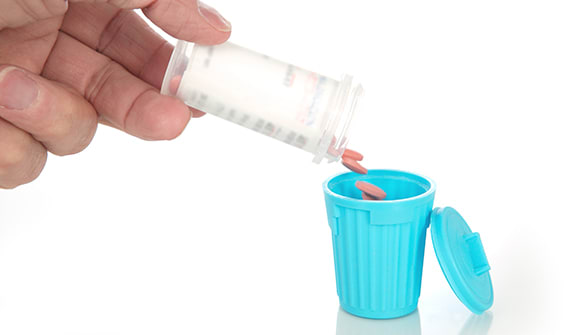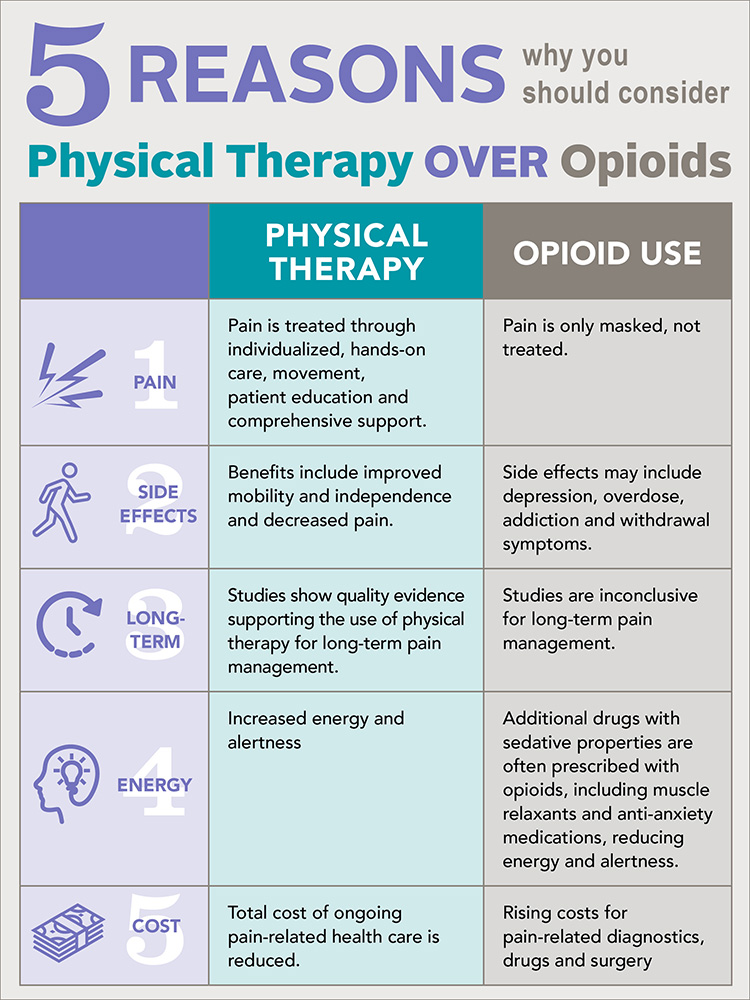Time to ditch the pain pills
Choose physical therapy over opioids for chronic pain.
Article Author: Vikki Mioduszewski
Article Date:

We’ve all experienced pain – a bruised elbow, skinned knee or a simple headache. Pain is a normal sensation our bodies use to signal possible injury and can usually be relieved by a little rest or a dose of over-the-counter pain medication.
Chronic pain, however, is different in that it can last for 12 weeks or longer. Chronic pain sufferers often find little relief from rest or basic pain medications, and will often seek medical help for their symptoms.
Until recently, chronic pain was often treated by opioids, a class of prescription pain medication that includes oxycodone, hydrocodone, morphine and hydromorphone. However, the Centers for Disease Control and Prevention reports high-quality evidence supporting the use of physical therapy for pain conditions.
Here are five reasons why you should consider physical therapy over opioids:

Just a few of the chronic pain conditions that can benefit from physical therapy are:
- Osteoarthritis
- Joint pain
- Tenderness
- Chronic headaches
- Weakness
- Range of motion loss
- Back or neck pain
- Inflammation
- Mobility loss
- Fibromyalgia
- Rheumatoid arthritis
Comprehensive approach
In addition to physical therapy, chronic pain sufferers can also benefit from occupational therapy, massage therapy and behavioral therapy. A comprehensive approach allows patients to improve their quality of life across the board.
- Occupational therapy – Learn modifications for daily activities such as bathing and cleaning, as well as ways to reduce pain from workplace situations
- Massage therapy – Learn relaxation techniques and allow time for self-care on a regular basis
- Behavioral therapy – Learn to manage the emotional and mental stress brought on by chronic pain
Baptist Rehabilitation Services offer a variety of individualized programs to treat pain, injuries and chronic illnesses. To learn more about how physical therapy can benefit you, visit BaptistJax.com/Rehab or talk to your doctor.



